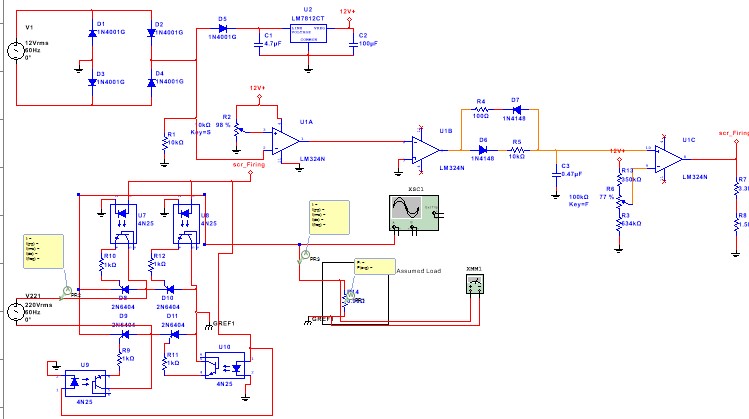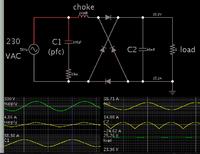suwangin
Newbie level 4
Hello guys. Can someone help me with this experiment? i am trying to use scr triggering in order to produce larger output power at the load with 24 volts output dc and 220vrms input AC THANKS!!
Follow along with the video below to see how to install our site as a web app on your home screen.
Note: This feature may not be available in some browsers.


It's not the best way to do it, but well feasible following classical SCR control schemes. The essential point is to have a sufficient large storage inductor on the DC side along with a free wheeling diode. The uncomfortable point is that you get small conduction angles and respectively high peak current (same magnitude as Idc) on the mains side.producing a 24VDC, 600W output from the mains by means of an controlled SCR rectifier is the wrong way to go.
A reasonable design would place a transformer (e.g. 230 to 30V) on front of the controlled bridge.